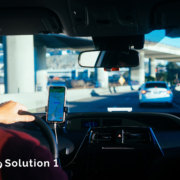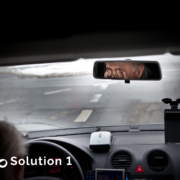The willingness of the young driver to engage in risky driving behavior depends on their perception of the danger involved in performing such actions.
Road safety is today one of the most actual and challenging eld of research, as road fatalities continue to increase year after year with dramatic social and economic impacts. Because of the factors associated t fatal road accidents, most studies are addressed to human factors who aspire to analyze driver behavior.
Road traffic collisions are responsible for approximately 1.35 million deaths per year across the world and are the primary cause of death for young people aged between 5 and 29 years old. In Europe, 25,300 people lost their lives in traffic collisions, of which 14% were between 18 and 24 years old. These numbers are worrying considering that this cohort comprises 8% of the total EU population. In the UK, young drivers aged between 17 and 19 are involved in 9% of fatal and serious crashes where they are the driver, even though they only represent 1.5% of UK license holders.
Road accident involvement among young and novice drivers has been seen as higher compared to other age groups of drivers. The term young driver is defined as a driver aged between 18 to 25 years old. Young people aged between 16 and 19 are three times more likely to get involved in a fatal car crash than drivers aged 40 to 49. Specifically, young male drivers are those who represent the highest numbers of road deaths when compared to their female peers.
Research shows that youth and inexperience are responsible for crashes in a significant proportion of young drivers. Younger drivers are lacking in driving skills since the improvement of the skills eventually increases with age. The literature consistently revealed that younger drivers tend to commit more traffic violations such as speeding and using mobile phones while driving despite their lack of driving experience.
While driving skills are mainly influenced by driving experience, the decision to engage in risky driving seems to be more associated with age. For instance, much research has identified that drivers younger than 25 have an increased willingness to engage in risky driving behavior compared to their older counterparts.
Independent effects for experience and age. Compared drivers over the age of 25 with younger novices and found differences between the two groups with younger novices reporting higher crash rates. The researcher observed that young drivers of a similar age but with different driving experiences report different crash rates.
In their study, young novice drivers at the age of 21 were involved in more road crashes than experienced drivers of the same age, but both groups reported considerably lower collisions in comparison to 17 to 20-year-old novice drivers.
However, not many studies have explored the effects of age and driving experience on the proneness to engage in risky activities. What is well-known is that young male drivers tend to be more optimistic about their driving ability when compared to older male drivers, and they are more willing to engage in risky behavior.
They also perceive certain traffic situations such as speeding or phone use as less risky in comparison to older drivers. While there is evidence to suggest that hazard perception skills improve with experience, risk appraisal seems to be more affected by age.











